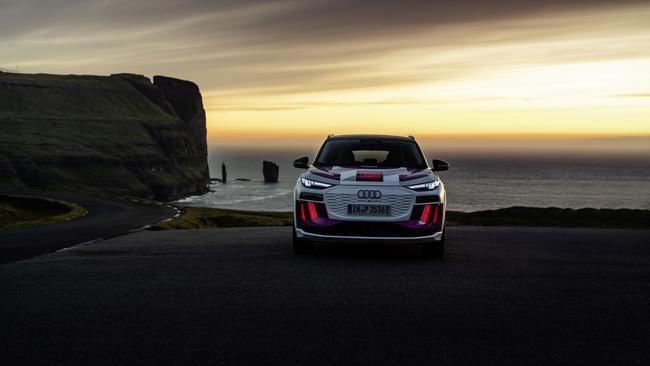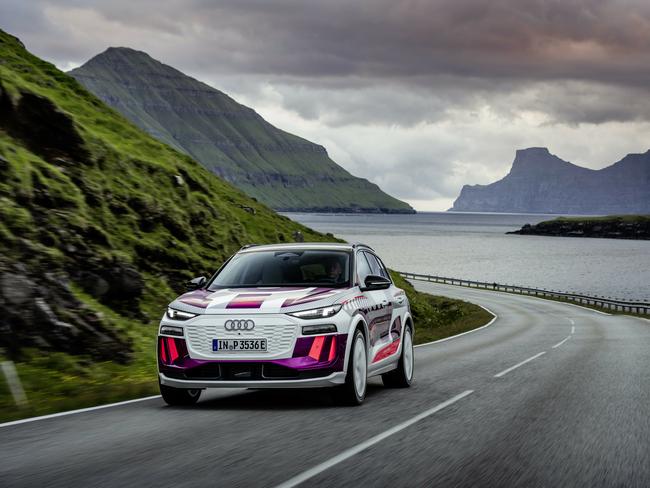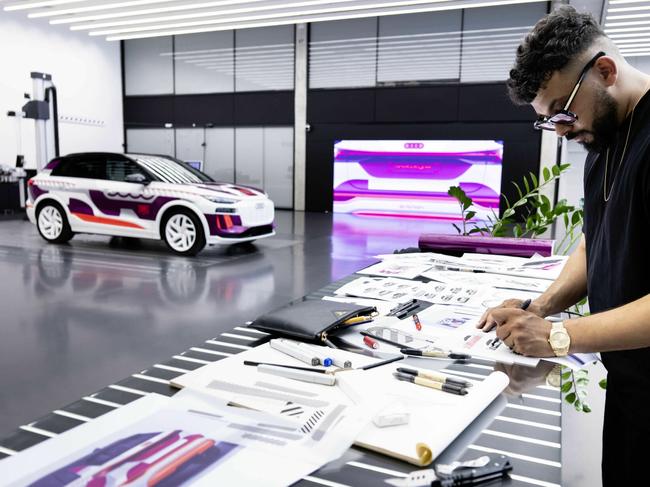Audi’s Q6 e-tron EV SUV makes car nerds see the lights
Audi’s the new generation Q6 e-tron EV SUV allows the driver to customise the light signature eight different ways via their multi-media interface.

Among the many embarrassing “skills” possessed by car nerds is the ability to identify cars from even the briefest glance at the shape of their tail-lights at night. It is a self-evidently useless ability, unless a car has just run you over and you need to identify the make and model of your hit-and-run driver.
Imagine how impressed the police investigators would be when they visited your hospital bedside to find that you could unequivocally confirm: yes, officer, the offending vehicle was, without any doubt, a VF Holden Commodore sedan.
Fast forward, appropriately, to 2011 when daytime running lights (DRLs) became mandated in Europe and the car manufacturers there, always keen to reshape a mandate into a marketing edge, discovered it was a clever way to boost brand identity.

The common, low-light driving conditions in places like Scandinavia and Canada activated the “headlights on” mantra years before this. Volvo later cleverly refashioned its LED DRL signature lighting to create one of the most striking effects, dubbed “Thor’s hammer”.
Now it’s Audi’s turn to shift the goalposts again by introducing its second-generation OLED (organic light emitting diodes) headlamp system on the new generation
Q6 e-tron EV SUV, which allows the driver to customise the light signature eight different ways via their multi-media interface (MMI).
And in one fell swoop, the car nerds will be forever frustrated.
Lighting tech has been an important part of Audi’s DNA for years, the most recent being the introduction of digital matrix LED lights for the e-tron Sportback, which uses a tiny chip with around one million micromirrors, each of which has an edge length of only a few hundredths of a millimetre.

Electrostatic fields tilt the mirrors at a rate of up to 5000 times per second, creating a precise, lane-specific carpet of illumination. A lens system directs the majority of the light on to the street. When a particular area should be dimmed, the necessary light is directed to an absorber that swallows it up.
OLED lighting – organic thin films between two conductors – was rolled out first by Audi on the TT RS sports coupe and takes intelligent lighting one step further.
Six OLED panels with 360 segments on the Q6 e-tron’s tail-lights can serve as visual communication devices to other road users, producing an X-type warning signal for when it is in automated parking mode, or when there is a hazard on the road ahead that others can’t see.
And, for pure fun, the lights can paint various shapes on a wall or garage door in front of you when you start the car up, projecting things like the Audi rings logo, for example, and creating perhaps the world’s least exciting outdoor cinema.
Still, car nerds would watch it, for sure.


